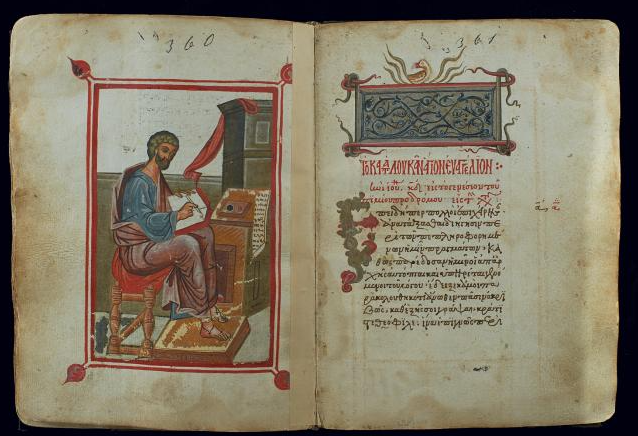Crete, the largest of the Greek islands, is renowned for its rich history and cultural heritage. This heritage is beautifully encapsulated in its historical manuscripts and books, which provide invaluable insights into the island’s past. These manuscripts, spanning from ancient times through the Byzantine and Venetian periods to the present day, are a testament to Crete’s enduring intellectual and cultural contributions. Exploring Cretan historical manuscripts and books offers a fascinating journey through the island’s literary and scholarly achievements, highlighting its role as a cultural bridge between East and West.
Ancient and Classical Manuscripts
The literary tradition of Crete dates back to ancient times, with the Minoan civilization (circa 3000-1450 BCE) laying the foundation for the island’s rich manuscript heritage.
Minoan and Mycenaean Periods
- Linear A and Linear B Tablets: The earliest known manuscripts from Crete are the Linear A and Linear B tablets. Linear A, still undeciphered, was used by the Minoans for administrative and religious purposes. Linear B, deciphered as an early form of Greek, was used by the Mycenaeans and provides valuable information about their economic and social structures.
- Phaistos Disc: The Phaistos Disc, a unique artifact from the Minoan era, is a clay disc inscribed with a spiral of stamped symbols. Its purpose and meaning remain a mystery, but it is considered one of the earliest forms of printed text.
Classical Period
- Homeric Influence: During the Classical period, Cretan scholars and scribes were influenced by Homeric epics and other Greek literature. Manuscripts from this era reflect the integration of Cretan and broader Greek literary traditions.
Byzantine Manuscripts
The Byzantine period (330-1204 CE) marked a flourishing of manuscript production in Crete, driven by the island’s strategic importance and its vibrant monastic communities.
Religious Texts
- Gospels and Psalters: Many Byzantine manuscripts from Crete are religious texts, including beautifully illuminated Gospels and Psalters. These works are characterized by their intricate miniatures, ornate calligraphy, and the use of gold leaf.
- Hymnography and Theology: Crete produced significant hymnographic and theological texts, contributing to the rich liturgical traditions of the Eastern Orthodox Church.
Secular Works
- Historical Chronicles: Byzantine-era chronicles from Crete provide valuable insights into the island’s political and social history. These manuscripts often include detailed accounts of local events, administrative records, and biographical sketches.
- Literature and Philosophy: Secular works from this period include literary and philosophical texts, reflecting the intellectual pursuits of Cretan scholars and their engagement with classical Greek thought.
Venetian and Ottoman Periods
The Venetian (1204-1669) and Ottoman (1669-1898) periods brought new influences to Cretan manuscript culture, blending Western and Eastern traditions.
Venetian Influence
- Humanistic Texts: Under Venetian rule, Cretan scholars were exposed to the Renaissance humanist movement. Manuscripts from this period include translations of classical texts, as well as original works in philosophy, science, and literature.
- Scriptoria and Libraries: The establishment of scriptoria and libraries by Venetian authorities and local monasteries facilitated the production and preservation of manuscripts. Notable collections were amassed, reflecting the island’s cultural diversity.
Ottoman Contributions
- Multilingual Manuscripts: The Ottoman period saw the creation of multilingual manuscripts, reflecting the coexistence of Greek, Turkish, and Venetian influences. These manuscripts often contained a mix of religious, legal, and literary texts.
- Islamic Manuscripts: Ottoman rule introduced Islamic manuscripts to Crete, including Quranic texts, legal documents, and poetry. These works enriched the island’s manuscript heritage with new linguistic and cultural dimensions.
Modern Manuscripts and Books
The 19th and 20th centuries witnessed significant changes in Cretan manuscript production, driven by political upheavals and technological advancements.
Nationalism and Independence
- Revolutionary Texts: Manuscripts from the period of the Cretan Revolt against Ottoman rule (1866-1869) include revolutionary proclamations, diaries, and letters. These documents provide a firsthand account of the struggle for independence and national identity.
- Educational Texts: Following Crete’s union with Greece in 1913, there was a surge in the production of educational texts. Schools and universities played a crucial role in preserving and disseminating Cretan literary and historical knowledge.
Contemporary Works
- Literary Revival: The 20th century saw a revival of Cretan literature, with authors such as Nikos Kazantzakis and Odysseas Elytis gaining international acclaim. Their manuscripts and published works continue to be studied and celebrated worldwide.
- Digital Preservation: Modern efforts to digitize historical manuscripts and books have made Cretan literary heritage more accessible. Digital libraries and online archives ensure the preservation of these treasures for future generations.
Preservation and Access
The preservation of Cretan manuscripts and books is a priority for libraries, archives, and cultural institutions. Efforts focus on both physical conservation and digital accessibility.
Conservation Techniques
- Restoration Projects: Conservation projects involve meticulous restoration of fragile manuscripts, including the repair of damaged pages, stabilization of bindings, and protection against environmental threats.
- Climate-Controlled Storage: Manuscripts are stored in climate-controlled environments to prevent deterioration from humidity, temperature fluctuations, and light exposure.
Digital Archives
- Digitization Programs: Many institutions have launched digitization programs to create high-resolution digital copies of manuscripts. These programs increase access for researchers and the public while reducing physical handling of the originals.
- Online Platforms: Digital archives and online platforms, such as the Cretan Studies Foundation and the University of Crete’s digital library, provide searchable databases of digitized manuscripts and books.
Conclusion
Cretan historical manuscripts and books are invaluable cultural artifacts that offer a profound insight into the island’s rich intellectual and cultural heritage. From ancient Linear B tablets and Byzantine illuminated Gospels to Venetian humanistic texts and revolutionary documents, these works chronicle the dynamic history of Crete. Preservation efforts, both traditional and digital, ensure that these treasures remain accessible for future generations, allowing scholars and enthusiasts to continue exploring the island’s storied past. Through these manuscripts and books, the legacy of Crete’s literary and scholarly achievements endures, celebrating the island’s enduring contribution to global culture and knowledge.


